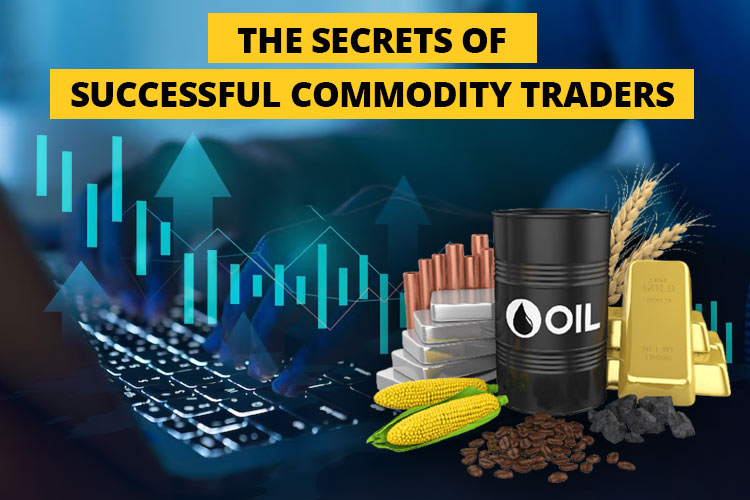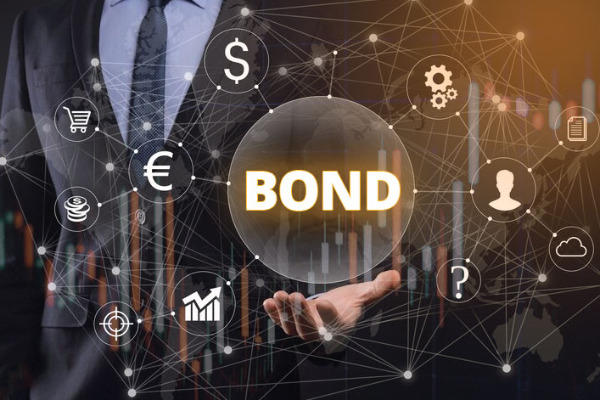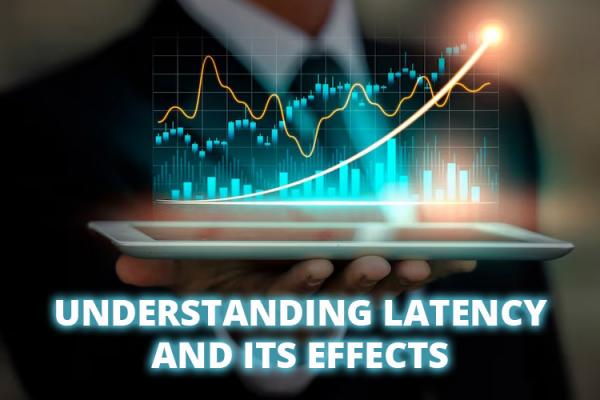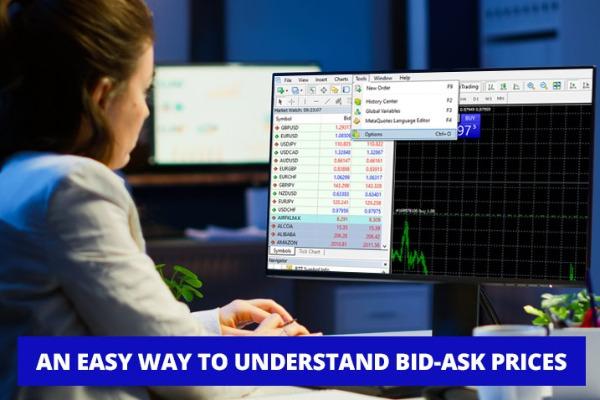Commodity trading offers a huge opportunity to earn profits, but it is still not as popular as stock trading. So, let's take a closer look and see how it works.

Commodity goods like oil and crude iron are raw materials that power the global economy and are one of the major asset classes in the financial industry. They offer great opportunities for investors from price fluctuations to diversify their portfolios.
Commodity trading is also one of the oldest mediums of trade that has been around since the early days. Thanks to modern technology, commodity trading can be done smoothly now and is available to anyone around the globe.
While commodity trading essentially works in the same manner as stock trading, there are several notable differences and unique characteristics that every investor should know. Keep reading to learn the basics of commodity trading in 4 parts.
Contents
1. Types of Commodities
Commodities are raw materials or agricultural products used to produce refined goods. It covers various products ranging from wheat to precious metals. In the financial world, commodities refer to physical goods that can be bought, sold, or traded in the commodity market.
Investors can trade commodities in the commodity market or exchanges like the Chicago Mercantile Exchange and the London Metal Exchange.
There are so many commodity options to choose from, but in general, those assets can be categorized into these four major groups:
- Energy Commodities – crude oil, coal, natural gas, ethanol, etc. A series of renewable energy, like wind power and solar power, is also included in this group.
- Metals Commodities – precious metals like gold, silver, platinum, and industrial metals like tin, copper, aluminum, and zinc.
- Agricultural Products – edible goods like sugar, wheat, and cocoa and non-edible goods like cotton, rubber, and palm oil.
- Livestock and Meat – all live animals like cattle and hogs.
In addition, commodities can also be divided into soft and hard commodities. Hard commodities refer to natural resources that require mining or drilling to find. This includes gold, copper, and oil. Meanwhile, soft commodities refer to materials that are grown or ranched. This includes agricultural products like wheat and farm-raised livestock.
Commodities are used to make various goods and services. They are mostly produced in large quantities and traded in bulk, so commodity trading might not be suitable for retail investors.
Typically, commodities are sold by the companies that produce them and bought by companies that need them for their business. For instance, cotton is needed by companies that make clothes, while lumber is needed by companies that make furniture.
It is also worth mentioning that commodities of the same grade are considered "fungible", meaning they can be swapped regardless of who produced them. Thus, what matters is the product's quality and purity.
2. How to Trade Commodities
Commodity trading is the buying and selling of various commodity products. Commodities can be traded in particular exchanges, where traders need to speculate on changes in the market and take advantage of the price movement. If they think the price of a commodity will rise, they open a long position; if they think the price will fall, they open a short position.
Modern commodity trading started in 1848 at the Chicago Board of Trade in the United States. The aim was to protect farmers/sellers and buyers from price changes throughout the year by agreeing to a price ahead of time through futures contracts.
Today, the commodity market is much larger and offers a long list of tradable commodities. The market is also open 24 hours a day during the workweek, and it is available for people from around the world.
There are several ways to trade commodities, each with benefits and disadvantages.
See Also:
Commodity Futures
The most common way to trade commodities is by using futures contracts. Futures contracts can be found in certain brokerage firms. The contract is a form of agreement between two investors regarding the commodity price in the future.
Let's say you agree to a futures contract that requires you to buy 5,000 barrels of oil at $40 per barrel in 30 days. Once the contract ends, you'll need to close the contract by taking an opposite position through the spot trading market.
In this case, you'll need to enter another contract to sell 5,000 barrels of oil at the current market price. If the price exceeds your initial prediction, you'll get a profit, but if it's lower, you'll lose money. Remember that you'll need to pay a commission every time you open or close a position.
Invest Directly in Physical Commodity
You're not buying or selling the commodity when you trade with futures contract. So instead of delivering or receiving thousands of barrels of oil, futures traders only make speculations on the commodity's price changes.
However, it's possible to buy and trade physical goods when it comes to precious metals like gold and silver. It's even easy for individual investors to obtain and profit from the commodity. You can go to a dealer and buy precious metals, which come in various forms, like gold bars, coins, or jewelry.
The biggest advantage is that you don't need a third party to make the transaction. You can feel the actual weight of your investment and store it safely. You can sell them back to the dealer when you no longer want them.
The drawback of dealing with physical trading is the delivery cost. So overall, investing directly in physical commodities is quite convenient, but it needs extra effort, especially for individual investors.
Commodity Stocks
Another path you can pick is to buy the company's stock involved with the commodity. For example, if you want to invest in oil, you could buy the stock of a drilling company; if you want to invest in wheat, you could buy the stock of a large agriculture business.
The stock prices of those companies typically follow the price of the underlying commodity. So, if oil prices rise, an oil company's share price should also go up.
In a way, investing in commodity stocks is less risky than investing directly in the asset. The prices of company stocks are relatively stable because even if the commodity falls in value, the company can still survive and make money.
The concept goes in both ways. If the commodity price rises significantly, it might or might not affect the stock price much because other factors are in play, like the company's management and the total market share.
Commodity ETFs, Mutual Funds, and ETNs
Next, based on commodities, you could invest in Exchange Traded Funds (ETFs), mutual funds, and Exchange Traded Notes (ETNs). You can search for investment funds that invest in physical materials, commodity stocks, futures contracts, or a combination.
These funds combine the capital from multiple investors and build one extensive portfolio that aims to track the price of a commodity or a group of commodities.
For example, investors who want to invest in gold could choose the SPDR Gold Trust ETF (NYSEMKT:GLD), and those who want to invest in oil could buy shares of the United States Oil Fund LP (NYSEMKT:USO).
The benefit of making this kind of investment is that you can access a much larger range of commodities without spending much money. Besides, the portfolio is usually managed by professionals, so you won't have to worry much about trade management. However, you'll need to pay for extra management fee to the company.
Commodity Pools and Managed Futures
Last but not least, you could also invest in commodity pools and managed futures, which are essentially private funds that can be based on commodities. They are more or less similar to mutual funds, but many are not publicly traded, so you'll need to be approved before you can invest.
Apart from that, these funds use more complex trading strategies than general ETFs and mutual funds so they might give you higher returns. Please note that this also means you must pay higher management fees.
See Also: Commodity Price Today
3. The Benefits of Trading Commodities
Here are the advantages that you could get from commodity trading.
- Trading opportunities: Commodity prices are generally pretty volatile, which can be good or bad. The bright side is that it opens up a bunch of trading opportunities. If you succeed, you could profit significantly from the ups and downs.
- Longer trading hours: The commodity market is open most of the week, offering flexible timing. For instance, you can easily use post-office hours if you cannot trade during office hours.
- Diversification: Commodity trading offers an excellent opportunity to reduce trading risks and diversify your portfolio because commodities have little to no direct correlations with traditional assets like bonds or stocks.
- Leveraged trading: It's pretty common to use leverage in commodity trading. This way, you can invest a small amount of money and magnify your position using leverage. However, remember that while you can get bigger gains from winning trades, you can also lose money more quickly.
- Protective hedge against inflation: Commodities have the power to protect investors from the negative effects of inflation because prices tend to rise during such periods.
4. The Risks of Commodity Trading
Before deciding to invest in commodity assets, here are some risks that you must be aware of, including:
- Commodities are Highly Volatile
We've mentioned that commodity prices are highly volatile. While this can be interpreted as a trading opportunity, it carries certain risks that all investors must know. Therefore, monitoring your trades closely is essential, especially during special occasions like war, pandemics, etc. - Commodity Trading is Different from Stock Trading
Commodity trading is often seen as a different version of stock trading because it works similarly. This statement is not wrong, but several things distinguish the two. First, commodity prices are heavily influenced by the supply and demand of the market. Consequently, certain events might not affect stock prices but impact commodity prices badly. A huge forest fire, for instance, may not impact equity but can affect the price of commodities, especially agricultural products. - Commodities are Cyclical in Nature
Commodity prices tend to move in cyclical trends derived from the universal concept of supply and demand, geopolitical factors, and economic events. As a commodity trader, you need to be able to spot opportunities based on the said commodity cycle. Apart from that, it would help if you kept your eyes open for unprecedented situations, which can be a huge opportunity or a danger.
Conclusion
Commodity trading can be a highly profitable investment, but it is more suitable for expert traders and large businesses because of the high risk and high capital requirement. It is also considered more complex than regular stock trading as numerous factors could affect the market, such as geopolitical tensions, macroeconomic factors, etc.
Thus, learning and understanding how the commodity market works is essential. Since the price changes can sometimes be extreme, you'll also need a good risk management system.
Remember that unpredictable events such as weather, disease, and natural disasters can have massive impacts on commodity prices in the short term. If you plan to invest long-term, you could use commodity stocks, ETFs, or mutual funds.

 Dedicated FREE FOREX VPS
Dedicated FREE FOREX VPS Free FOREX Virtual Private Server
Free FOREX Virtual Private Server MT4 Demo Contest, Get $500
MT4 Demo Contest, Get $500 Sign Up for an Account, Claim 60% Deposit Bonus
Sign Up for an Account, Claim 60% Deposit Bonus Free MT4/MT5 VPS 2024
Free MT4/MT5 VPS 2024 Send E-mail and Get Free Merchandise
Send E-mail and Get Free Merchandise $1K Refer a Friend Bonus for Pepperstone Pro clients
$1K Refer a Friend Bonus for Pepperstone Pro clients Maximize Your Earnings with 100% Deposit bonus
Maximize Your Earnings with 100% Deposit bonus Trade to Win, $5,000 Monthly Demo Contest
Trade to Win, $5,000 Monthly Demo Contest Claim 30% + 15% Deposit Bonus from LiteFinance
Claim 30% + 15% Deposit Bonus from LiteFinance











